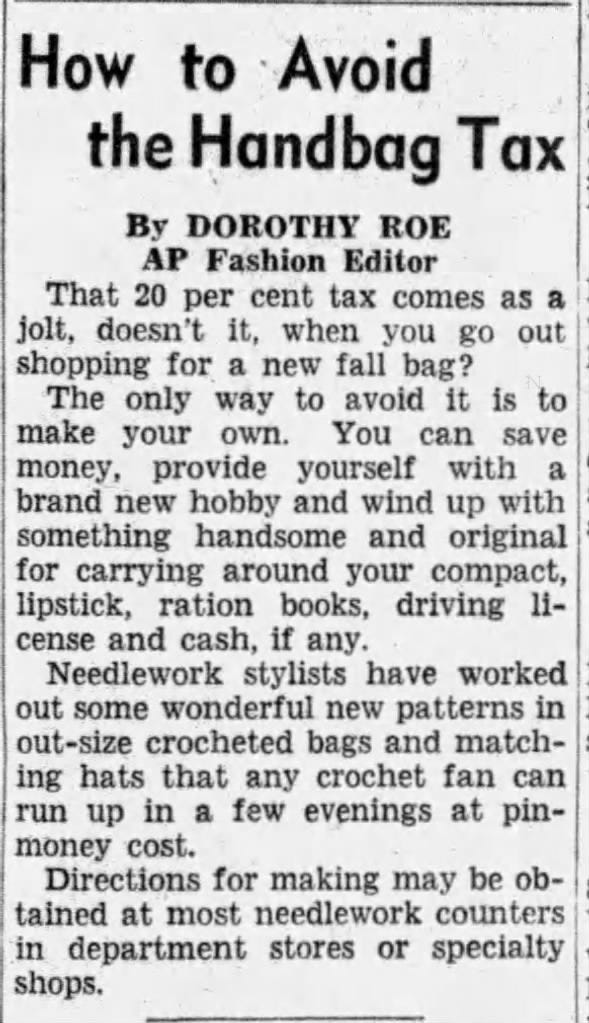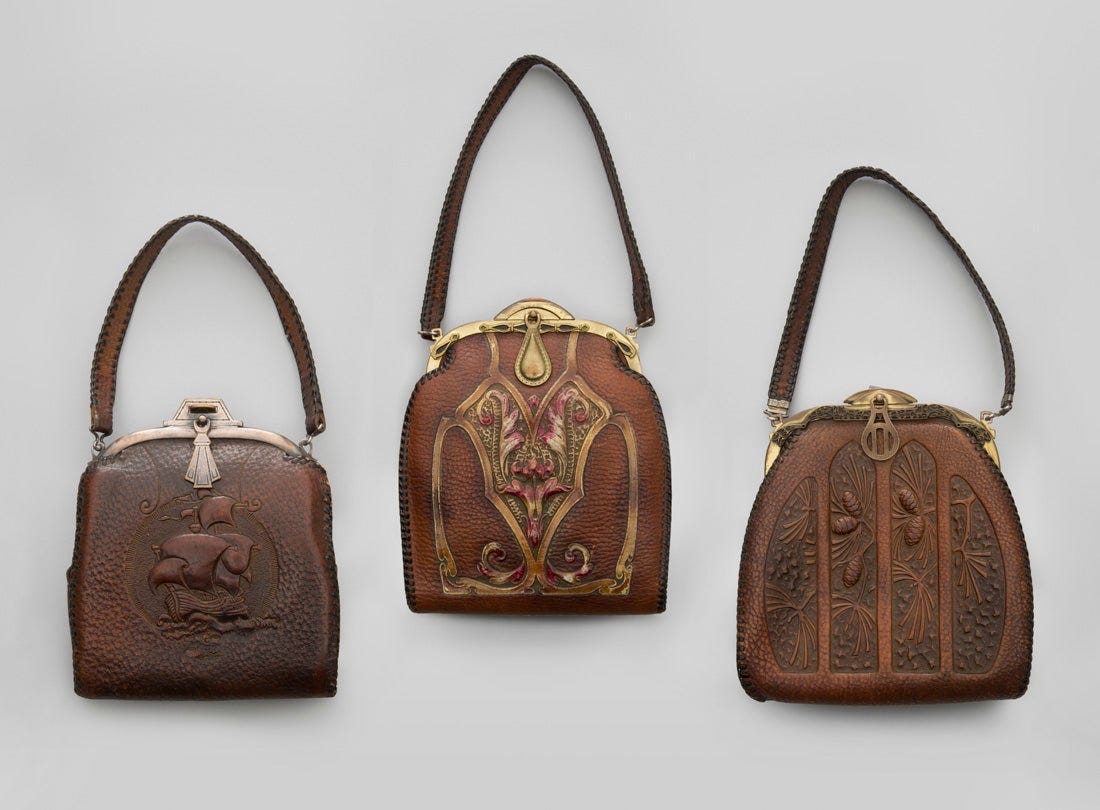Post-Spanish Flu, much like after COVID-19, women embraced the Roaring 20s with exuberance, leading to trends that would echo in the future. The era saw the popularity of small evening bags, often rectangular or pouch-like, adorned with beads, embroidery, and metallic elements. Check out my TikTok for the history of the evening bag.
Art Deco’s influence was evident in the handbags' structured, geometric shapes and bold designs, with sleek clutches becoming a favored silhouette for their sophisticated and minimalist look. The color palette ranged from classic black and gold to vibrant jewel tones, reflecting the period's exuberance. The short version is that people were excited to return after a global pandemic in which everyone had to stay inside, have school classes outside, and wear masks (oddly enough under the nose).
In contrast, during the Great Depression and World War II, the economic downturn and the Federal Excise Tax (FET) on luxury goods, primarily handbags, led to a shift towards practicality. It is a lesser-known fact that there even was a National Authority for the Lady's Handbag Industry to try and bring handbags back as a business and protect manufacturers and retailers.
DIY trends flourished as women crafted handbags from scrap fabric and recycled materials, often using simple, boxy shapes for practicality. Household materials like flour sacks, pillowcases, crochet, and even newspapers were used with wooden handles from boxes to make the first true craft handbags.
This period saw the rise of women’s fashion magazines and catalogs featuring patterns for handbags alongside clothing. Companies like Butterick, Vogue Patterns, and McCall's began offering handbag patterns in their collections, allowing homemakers to create stylish bags on their own.
Top-handle bags with structured frames became prevalent, offering functionality with compartments for daily essentials. Smaller, neutral-colored bags in browns, grays, and black were favored. This is not surprising during times of hardship. Most people tend to forget that the color in a collection reflects profit. If you can afford to create a short run of products knowing that it will cost you more to make, you will need to charge the same price for the more muted tones you produce considerably more of. Economies of scale are tied to this as well.
There might be the lipstick effect for economic downturns in beauty, specifically in the 1920s, but structural bags and muted materials are typically the markers for that in this industry, as seen above. Despite the financial hardships, luxury brands catered to the wealthy, creating minaudières—small, luxurious boxes crafted from silver and gold.
Notably, in 1932, Gaston-Louis Vuitton introduced the Néo bucket bag, designed to carry champagne bottles without breaking them, while Hermes launched the Sac à Dépêches (mailbag), which would later gain fame as the "Kelly bag" when Grace Kelly’s staple and then used it to conceal her pregnancy in 1956. Can you start to see the connection between this time and ours today? Let’s not forget the luxury market had a wild spike during COVID-19, which is still ongoing today.
After the official FET repeal in 1955, handbag silhouettes became more extravagant and varied, with demand for handbags skyrocketing. The retail market was ready for a boom in sales that had been essentially put on hold for eight years.
Larger, structured bags like frame bags and satchels returned to the forefront, reflecting the renewed post-war prosperity. Designers embraced luxurious materials such as crocodile, snakeskin, and ostrich and experimented with bolder, more colorful designs. The iconic Chanel 2.55 introduced a quilted silhouette with chain straps, blending elegance and practicality in a design that had stood the test of time even at that time.
New materials like Lucite and plastic allowed for playful, boxy shapes in casual handbags, while soft, oversized silhouettes also gained popularity for their fashionable yet functional appeal. Check out my Tiktok on the History of Lucite Bags
Enjoying this series? Let me know. Reshare, comment, and tell your friends.
You can listen on all platforms to this week’s episode, The Making of Anima Iris Handbags from Grief to Glamour, and catch up on here on all episodes of Handbag Designer 101 Podcast.
















